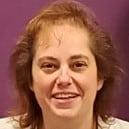An interview with Eileen Hirsch, IT leader at New York’s largest health system

Eileen Hirsch is the Manager of Application Development for Northwell Health, the largest healthcare provider in New York state with 21 hospitals and 830+ outpatient facilities treating more than two million patients. Eileen has more than 25 years of IT experience and leads a team of software engineers to create revenue cycle automations that enhance the patient experience, drive staff engagement and create meaningful efficiencies.
Eileen and R1 recently co-presented on Northwell’s automation journey at the Oracle Cerner Health Conference 2022. We took the opportunity for a short interview about her experiences with R1 automation and helpful takeaways for other healthcare providers looking to automate the revenue cycle:
Q: How did Northwell start its automation journey?
Hirsch: Northwell Health had legacy Cerner Invision, a mainframe black and green terminal system, and many Ollie scripts, the original automation software to my knowledge, running against it. When Northwell decided to go on Soarian Financials, they needed scripting software to run against Soarian that would do what Ollie was doing for Invision. Cerner actually suggested R1 Automation Suite as the Soarian Financials scripting automation solution. With R1 on board, we started writing small scripts to navigate Soarian screens and learned how nimble and easy to use R1’s automation capabilities really are.
Q: How does your team decide which automations to prioritize?
Hirsch: Different teams within our revenue cycle departments reach out to me pretty regularly to ask the same questions – can we automate this process or can R1 automation do this for us? If I think it’s something that can be automated, which I usually do, I ask them to document their requirements and open a request for automation that goes into my pipeline. Once a month I meet with the requesters and revenue cycle leadership and decide what has the biggest impact, the most benefit and best return on investment. From there each request gets a priority number and as resources free up, they get assigned and the project kicks off.
Q: How do you measure the success of automations?
Hirsch: In addition to measuring how much work our automations accomplish, I have some common-sense criteria for evaluating automation success. First, the developed processes must run in production and be completely free of defects. Second, the requesters have to be happy with the automations and ask for more. And finally, when I’m getting requests from people I’ve never met because the word about automation driving new efficiencies has spread from team to team, I know that we’re achieving our qualitative objectives across the health system.

Q: What is your most successful automation and how long did it take to develop?
All of our automation work has proven to be highly successful, and each department using automation thinks theirs is the most successful. But if I had to choose one project, just from a development and deployment perspective, it would be the COVID vaccine administration billing project.
This automated workflow included eight R1 automation scripts that schedule vaccine appointments into Soarian at one of our 17 community PODS during the height of the pandemic, for either Pfizer, Moderna or Johnson & Johnson. R1 automation received data from our HIE system for either the scheduling of the appointment or the administration of the vaccine. Automated routines updated either Soarian Scheduling or Financials depending on the record type, and each night created a charge file that was sent to our Data Management team to put into HL7 format and then into our billing system to route for vaccine administration billing.
In the first 30 days we processed 122,636 patient records, which broke down to 120 doses per hour for scheduling and 2500 patients per night for administrative billing. We started internally at Northwell discussing our requirements in January of 2021 and went live in production with our first automations just eight weeks later in March of 2021.
Q: What advice would you give to other health system leaders looking to start an automation strategy?
Hirsch: Well, to start they should expect a certain amount of automation naiveté. People who ask for automation don’t always understand how it works, what it does well and where it’s not applicable, so you may need to educate colleagues about the true impact of automation on workflows. Next, I would say to get alignment on return-on-investment expectations and program goals. Determine before you begin how you’re going to measure results, and then be rigorous in prioritizing and aligning against ROI expectations.
Q: What’s on the horizon for Northwell automation? what is your team planning to tackle in the next year?
Hirsch: We’re definitely going to continue expanding our enterprise automation capabilities within our R1 partnership. There’s no doubt about that. We also want to raise organizational awareness of the benefits automating the revenue cycle can drive and get alignment across the system on automation goals. And there is always the ongoing work of vetting new automation requests for the revenue cycle team.
Q: Any last thoughts to share on why revenue cycle automation has been such a success at Northwell?
Hirsch: I would say a commitment to continuous improvement and innovation throughout the system gave us a lot of opportunities. With the COVID vaccine billing project, for example, that was a tremendous administrative burden and there’s no way we could have hired enough people to do what the automations did for us. That’s true of a lot of automation projects. And finally, even with a system as large as ours with resources for an in-house automation team, a strategic partner like R1 is a huge help in creating and maintaining the automations that make us more efficient and effective.




